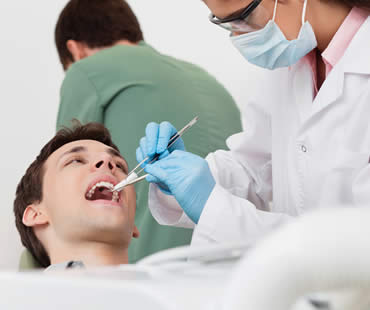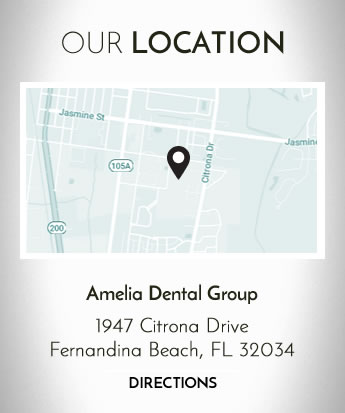
Today’s cosmetic dentistry offers an extensive array of treatments and procedures to help restore a beautiful and healthy smile. While you may never have considered cosmetic dental procedures as a solution to your dental concerns, there are quite a few reasons you may want to consider for seeking cosmetic dental treatment:
- Crooked, cracked or decayed teeth can be corrected through bonding, crowns, and veneers, returning your smile to its once vibrant and healthy appearance.
- Decay and disease can cause you to lose teeth, creating gaps that hollow your face and age your appearance. Cosmetic dentistry offers a wide variety of options such as dental implants for restoring missing teeth, keeping your smile and face younger looking.
- Teeth that have yellowed or discolored over time due to wine, tobacco or staining foods can be lightened up to ten shades with professional teeth whitening treatments performed by a qualified cosmetic dentist.
- “Horsey” looking teeth or “gummy” smiles can be corrected through gum re-contouring or restructuring to create a younger, more appealing smile.
- Misaligned or gapped teeth can be straightened through orthodontia such as Invisalign that is virtually invisible and pain and hassle-free.
Some cosmetic treatments may be offered by your family dentist, but you may want to consider a consultation with a qualified cosmetic dentist to find out more about the full array of treatments available to address your cosmetic dental concerns. Many procedures are quick and painless, and can be combined with other cosmetic treatments to achieve the results you desire. With the help of cosmetic dentistry and proper oral care, you can be assured a confident, more perfect smile.
Our dental office is located in Fernandina Beach

Facing dental issues are a fact of life, no matter your age. The likelihood is almost certain that at least one member of your family will require dental treatment at some point, not to mention the need for regular checkups and cleanings. The promise of dental care being required by every family member means that it can be beneficial to have a family dentist who can take care of each one’s oral health.
Although you might choose to seek oral care from a general dentist, there are some unique advantages that family dentists offer. First and foremost, a family dentist treats every member of your family no matter their age. This type of dental practice is comfortable handling any age group, while a general practice might not be as prepared for the young and old and everyone in between.
Another benefit is that you can find a single family dental practice and not have to keep looking for a dentist for each family member. You can convey your family information one time to one office, and the staff will get to know all of you. The dentist and staff will learn about the oral health of every family member, and you can feel confident that each person is receiving the same quality care.
Once you choose a family dentist, everyone will know what office to go to and may even be able to make joint appointments. It will be easy to communicate with a single location, and you’ll grow comfortable in dealing with the same group of people for every family member. Many people appreciate having a long-term professional healthcare relationship, and feeling confident in the care and experience each member of your family will have there.
Our dental office is located in Fernandina Beach

It is vital for parents to understand not to wait until an oral health problem arises to begin dental treatment for their kids. Parents should be aware that in order for children to have the best chance for healthy teeth and gums throughout life, preventive dentistry is one of the keys.
Good oral care should begin when your child is an infant. As soon as babies start drinking milk, sugars can attack the gums even though there aren’t any teeth yet. To avoid damage, clean your child’s gums by gently rubbing them with a damp soft cloth. Around age one, schedule your child’s first appointment with the dentist. The examination will include looking for any issues, teaching home care, and allowing your child to become accustomed to a dentist setting.
As you child grows, dentists and parents can partner together to teach preventive dentistry habits to children. Dentists can show parents the ideal ways to guide children in proper brushing and flossing, and parents can ensure that the methods are carried out consistently at home. You and your dentist may decide together as your child grows whether to opt for dental sealants to help protect your child’s teeth from potential decay and cavities.
Another aspect of good oral health that parents should be involved in is providing nutritious foods for their children. Your dentist can educate your family on the best foods for your teeth and gums, as well as the foods and drinks to avoid. Some items are known to contribute to tooth decay, gum disease, and staining. Teaching your child to make healthy diet choices will promote a healthy mouth.
Preventative dentistry both at home and in your dentist’s office will make your child feel confident about oral care and become comfortable with the dentist. If the time comes for more extensive services, your child will likely trust the dentist and have less apprehension about the dental visit. Good preventive care, however, helps avoid problems and your child will be less likely to encounter major problems requiring painful procedures and lots of time in the dental chair.
If you live in the Fernandina Beach area contact us today

There are a number of reasons that dentists or oral surgeons recommend surgery, but facial injuries are probably the most unexpected and alarming cause. Maxillofacial injury, or facial trauma, refers to any injury to the mouth, jaw, and face. Most of these injuries result from sports, car accidents, job accidents, violence, or an accident at home. Let’s learn about oral surgery resulting from facial trauma.
Broken bones are a common type of serious facial injury. Fractures can occur in the upper or lower jaw, cheekbones, palate, and eye sockets. Injuries in these locations may affect vision and the ability to eat, talk, and breathe. Hospitalization is often required for treatment, which is similar to that for fractures in other parts of the body. The bones must be lined up and held in place to allow time to heal them in the correct position. Because casts are not possible in facial injuries, the surgeon may use wires, screws, or plates to treat fractures. Sometimes healing takes as long as six weeks or more.
Even though some facial injuries are worse than others, all of them should be taken seriously. They affect an important area of the body, so it is recommended to seek treatment from an oral surgeon to make sure you receive optimum care. Even if stitches are all that’s required, it’s best to have them performed by an oral surgeon who can place them exactly as needed to produce the best results.
It’s no surprise that the best solution for facial injuries is to prevent them in the first place. Oral surgeons suggest consistent use of mouth guards, seat belts, and masks and helmets as required. Improvements have been made to safety gear to make these items more comfortable and efficient, so there should be no excuses for not using them to protect yourself and avoid injuries that can lead to oral surgery.
Schedule your appointment at our Fernandina Beach dental office

Wisdom teeth are really just your third molars, located in the very back of your tooth arch and are the last of your adult teeth to erupt. They most commonly erupt between the ages of 17 and 20. Most people have them, but for some people, these third molars simply do not develop. Some patients might have more than one set of wisdom teeth! Only an x-ray can reveal the complete story.
A high number of patients who possess wisdom teeth don’t know they have them because the teeth are impacted, or stuck underneath already erupted teeth, as opposed to erupting normally through the gums. This is when wisdom teeth become problematic.
The patient’s jaw may be too small to allow for the full eruption of the wisdom tooth, leading to it becoming stuck in the jaw, pushing at other teeth, causing pain and shifting of the teeth. The tooth might be able to erupt partially, triggering a flap of gum tissue to develop over the tooth, trapping bacteria and germs which can lead to serious infection.
Sometimes wisdom teeth come in at strange angles, facing sideways or backward, or they develop a serious infection and damage the surrounding teeth. They can also lead to the development of a cyst or cause damage to the jawbone.
If your dentist has told you that you need to have your wisdom teeth out, it’s a good idea to listen and to follow that advice. Removing problematic wisdom teeth can reduce crowding in the mouth, infection in the gums or tooth decay in the wisdom tooth or in the surrounding teeth.
The younger you are when you have your wisdom teeth removed, the easier it is to recover. Ask your dentist to learn more about wisdom teeth and about your particular needs as a patient.
We look forward to seeing you in our Fernandina Beach dental office

Many oral surgeries go beyond simply removing a tooth, and the cause is not always related to poor dental hygiene. Some reasons for oral surgery just can’t be predicted or avoided, such as injuries, birth defects, or cancer. Great strides have been made in oral surgery, especially for restoration and reconstruction techniques. These are some common reasons that oral surgery is advised.
Tooth loss
Replacing missing teeth with dental implants requires oral surgery so that the titanium implant can be inserted into the jaw. Providing an alternative to dentures and bridges, implants offer a secure and permanent solution that looks very natural. Candidates with adequate bone density, good overall health, and who practice proper oral hygiene are considered for implant surgery. After the implant heals, a crown will be placed on top to complete the restoration.
Impacted teeth
One of the most common oral surgeries is to remove impacted wisdom teeth. Often occurring during the late teen to early adult years, wisdom teeth are unable to erupt properly and must be extracted to prevent future problems.
TMJ
Temporomandibular joint disorders involve the joint where the skull and lower jaw come together in front of the ear. Facial pain, headaches, popping, and jaw problems can result, and dentists try to treat the disorder with solutions like splints, physical therapy, and medications. Severe cases can require surgery to fully correct the TMJ problems.
Injuries
Car accidents, sports injuries, and other trauma can cause broken facial bones or jaws. Surgery may be necessary to realign the jaws, wire bones together, and otherwise repair the injury so that normal function and comfort can be restored.
Cleft repairs
Birth defects like a cleft lip or palate are corrected through oral surgery. Usually a series of surgeries over a span of years is needed to improve the appearance and proper function of the areas affected by the birth defect.
Biopsy
Surgery is performed to remove cancerous tumors or lesions in the jaws or facial bones. This is especially true when the joints or connecting muscles and tendons are involved.







